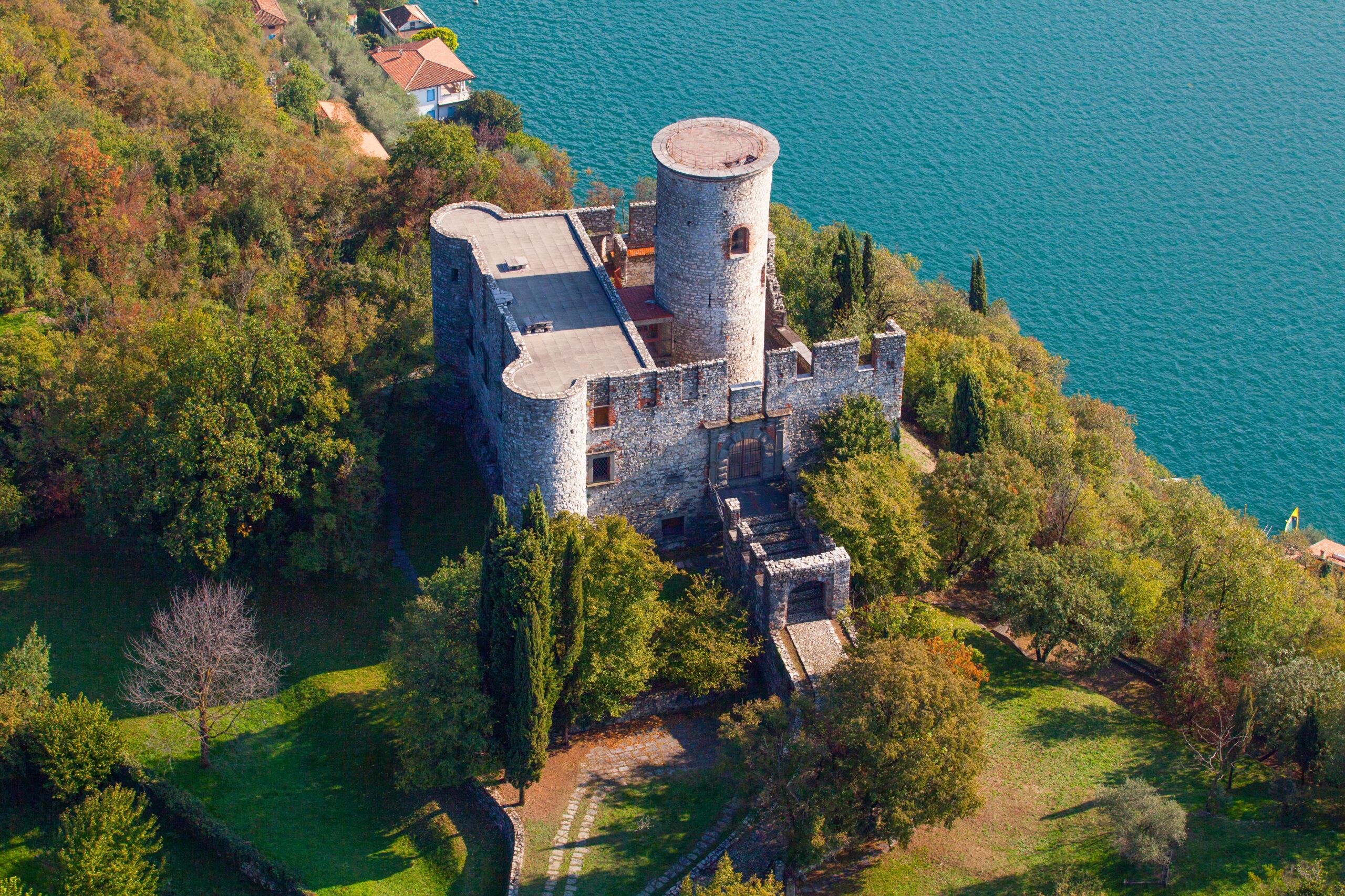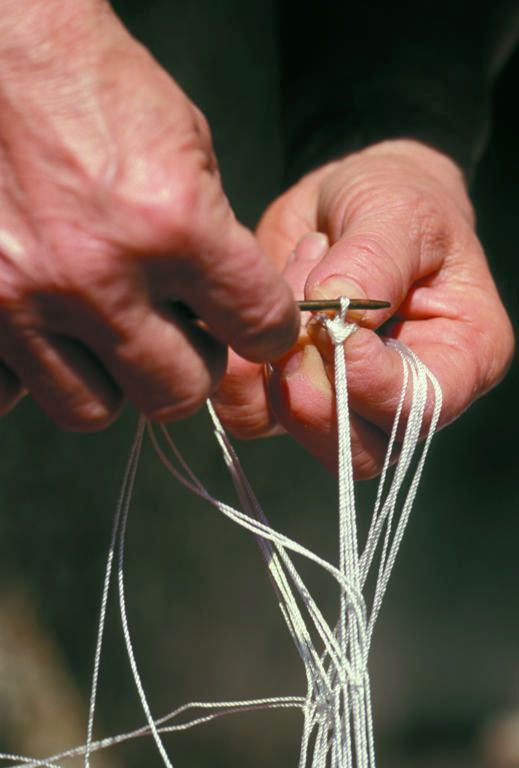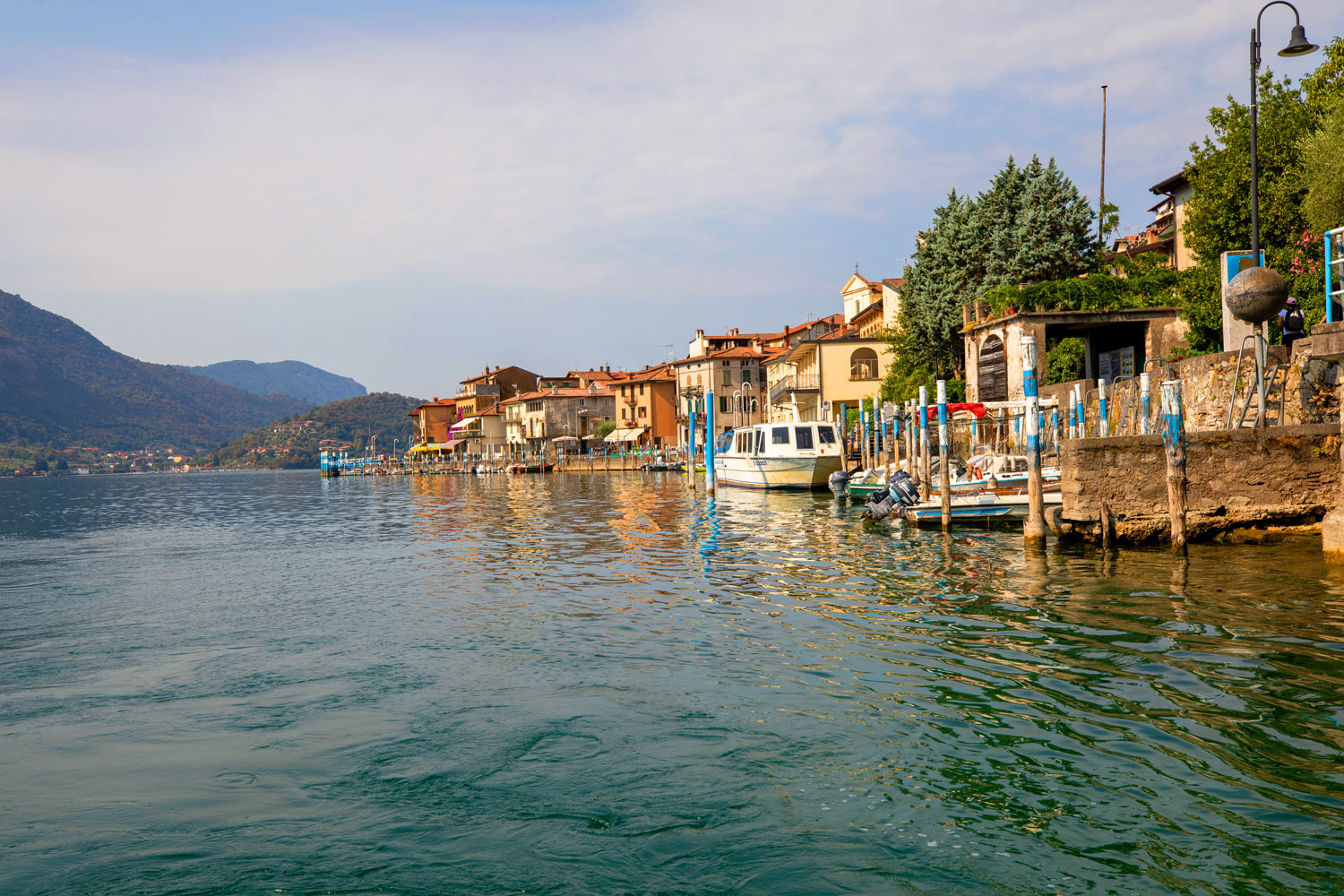Art and culture - Villas and castles
Martinengo Fortress
The castle, dominating the gulf of Sensole, between Peschiera and Siviano, is one of the most characteristic monuments of the island. During the 14th century, a spur facing the Bergamo side, opposite Tavernola, was chosen as the site for the building of the Oldofredi Castle because from here it was possible to control the whole lake, from north to south. The castle did not stand on the highest point of the island, already occupied by the Ceriola Sanctuary, and did not control the eastern side of the lake, which was under the jurisdiction of the Isei and later of the Oldofredi family, and therefore no attack could be aunched from this side. Exactly when the stronghold was bought by the artinengo family is unknown but it was presumably Antonio Prevosto who bought it around the mid 15th century.
That century was the scene of the ruin of the Oldofredi family, due to their friendship with the Visconti family, who were forced to sell their properties, whereas the Martinengo family, thanks to the services rendered to the “Serenissima” Republic of Venice, who had settled in the Brescia area, had great financial means. Following 1427, when Venice took control of the Bergamo area, the Rocca lost its defensive function and became a palace. This is what can be inferred from the cornices and frames of the windows and the wide portal, made of Sarnico stone which had never been used on the island up to then. This work was probably carried out by the brave Girolamo or by his father Antonio II. However, despite the changes it underwent, the building probably did not satisfy the taste of its lords: in fact the residence was located on a remote island, with no surrounding land and far from their interests, and was therefore abandoned. By the end of the 16th century their documents described the Rocca as “a half-ruined small fortress”.
Nowadays the castle is privately owned.
The Rocca has a square plant and pivots from an imposing tower, with a round-shaped plant and a sloping base, which represents the original part and heart of the castle. The mountain side of the building was used as a residence and was entirely built during the 15th century. All castles used to be characterized by a sighting tower protected by a spacer wall against which buildings were then built, and the castle of Monte Isola is a typical example. The cylindrical tower, with its truncated cone-shaped base, was founded on the rock, on the same level as the current first-floor trail, and was later covered with a courtyard.
Legend has it that once upon a time a wicked castle lord used to fire cannon shots against the boats of those fishermen who did not, once under the castle, opposite the rock of Herf (Serf), lower their sail as a gesture of submission. After some boats were sunk someone thought of turning this forced gesture into a devoted homage to the Virgin Mary, fervently worshipped on the island. That was when the image of the Madonna of the Ceriola was painted on the rock of Herf. Legend has it that the castle lord drowned while trying to remove the image of the Madonna.
The fortress is located in a dominant position on the Gulf of Sensole. Once reached the village of Menzino, is necessary to take the path n. 5 indicated next to the historic village. An irregular and uphill path reaches the green area in front of the fortress (estimated walking time of trail 15′ c.a).
Photos by: Linoolmostudio.it, Oscar Colosio
















Your contents on
#visitmonteisola